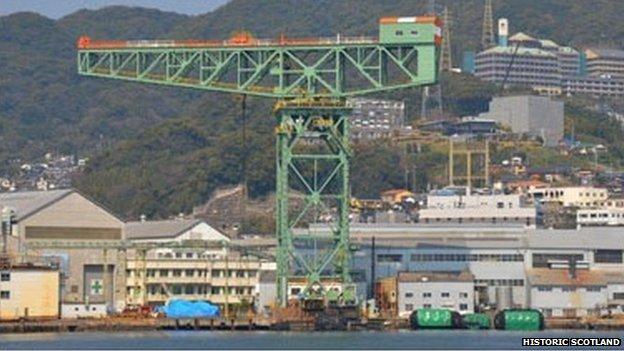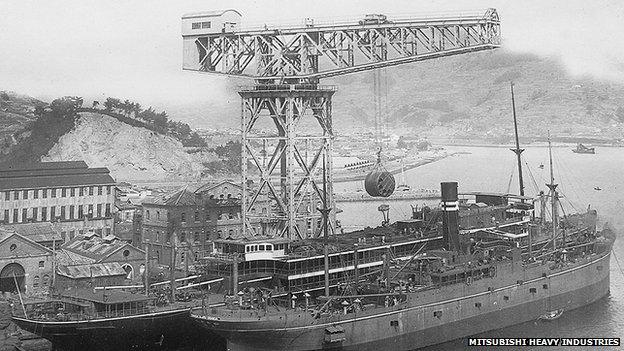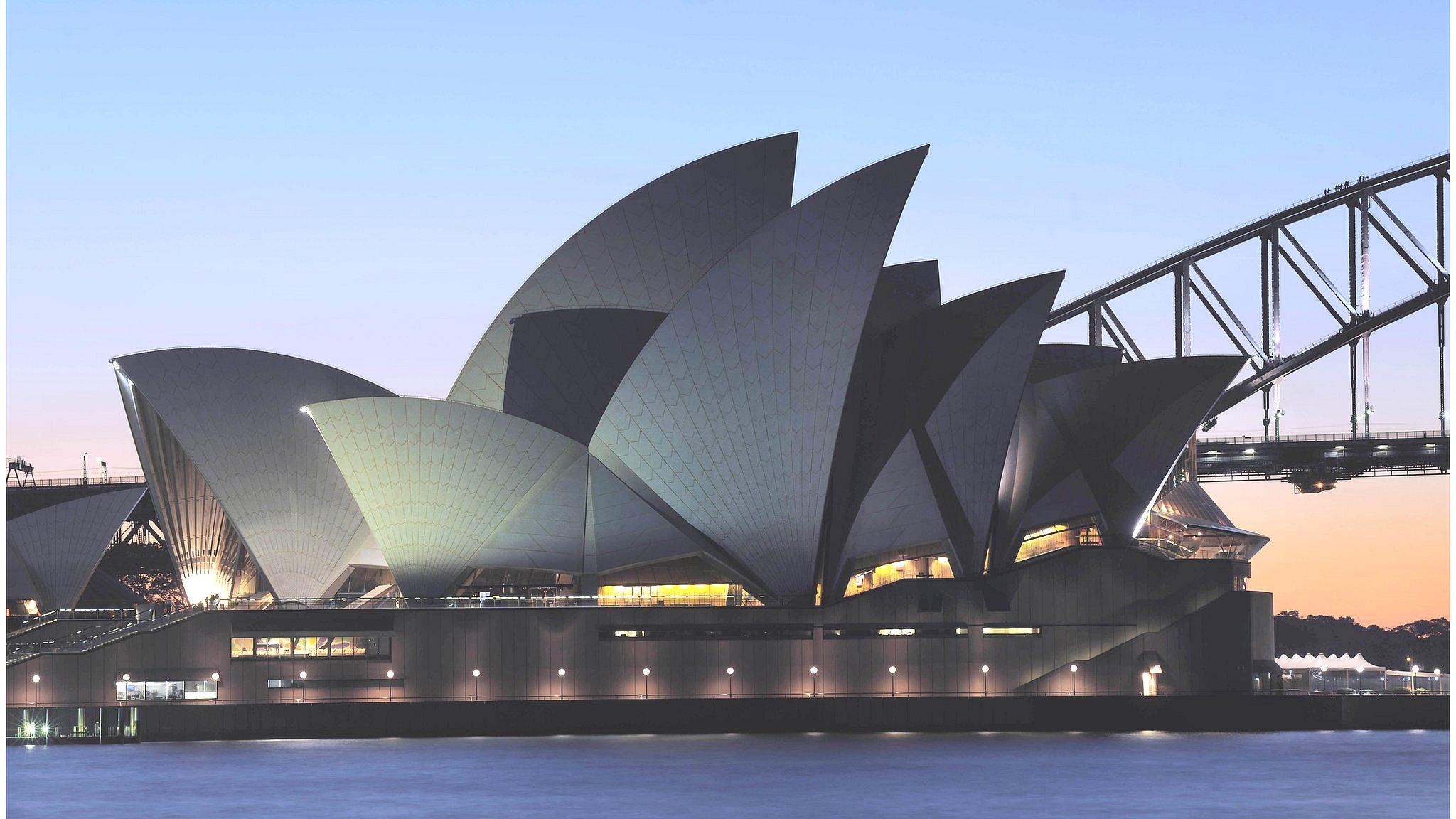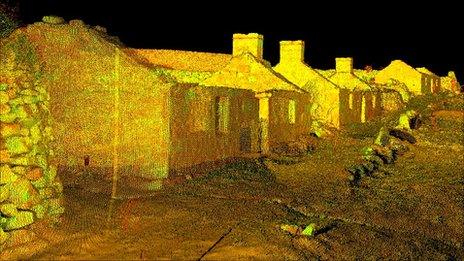Scottish Ten 3D project to scan Nagasaki Crane
- Published

The crane is located in the heart of Nagasaki harbour and is regularly still used by the Mitsubishi Group
An iconic crane designed and built in Scotland which sits in the heart of Nagasaki harbour in Japan is to be scanned as part of a digital project.
The pioneering Scottish Ten initiative was set up to produce 3D records of well-known landmarks.
Scotland's five UNESCO world heritage sites have already been mapped, along with other international sites, including the Sydney Opera House.
The Nagasaki Giant Cantilever Crane is the last location to be scanned.
The crane was built in 1909 and was ordered on the advice of Fraserburgh-born Thomas Blake Glover, who is regarded as a key figure in the industrialisation of Japan in the late 19th and early 20th centuries.
It was designed by the Glasgow Electric Crane and Hoist Company and constructed by the Motherwell Bridge Company.
It is still regularly used by the Mitsubishi group, and is a major landmark within Nagasaki harbour. It joins four other international heritage sites and Scotland's five UNESCO World Heritage Sites to be scanned by the innovative five-year project.
Fiona Hyslop, Cabinet Secretary for Culture and External Affairs, announced that the crane would be the final site to be laser scanned for the Scottish Ten project during the Edinburgh International Culture Summit at the Scottish Parliament.

The Crane was built and erected by the Motherwell Bridge Company in 1909
She said: "Scotland and Japan have longstanding cultural links, particularly in Nagasaki, thanks to our own Thomas Blake Glover (the 'Scottish Samurai') whose innovation and foresight is still celebrated today. This crane is a fitting symbol of Scotland's engineering prowess and of her influence across the world.
"More than 100 years on from its construction by Scottish designers and engineers, we are sending a team of modern-day experts to digitally record and document this impressive structure.
"The information they generate will not only assist current and future generations in the care and conservation of the crane, but will also help promote a wider appreciation, both of its design and operation, and of the exemplary maintenance regime that has ensured it continues to work every day."
3D visualisation
The Nagasaki Crane is one of only 11 of its kind known to survive, including the Titan Crane in Clydebank.
The Scottish Ten is a collaboration between specialists at Historic Scotland, experts in 3D visualisation at The Glasgow School of Art's Digital Design Studio, and not-for-profit digital heritage organisation CyArk.
The sites already laser scanned and recorded include New Lanark, St Kilda, the Old and New Towns of Edinburgh, the Antonine Wall and Neolithic Orkney.
Mount Rushmore in South Dakota, China's Eastern Qing Tombs, Rani ki Vav (Queens Stepwell) in Gujarat, India, and Sydney Opera House are the four other international sites which have been digitally mapped.
- Published14 November 2013

- Published22 October 2012

- Published6 July 2011

- Published17 August 2010